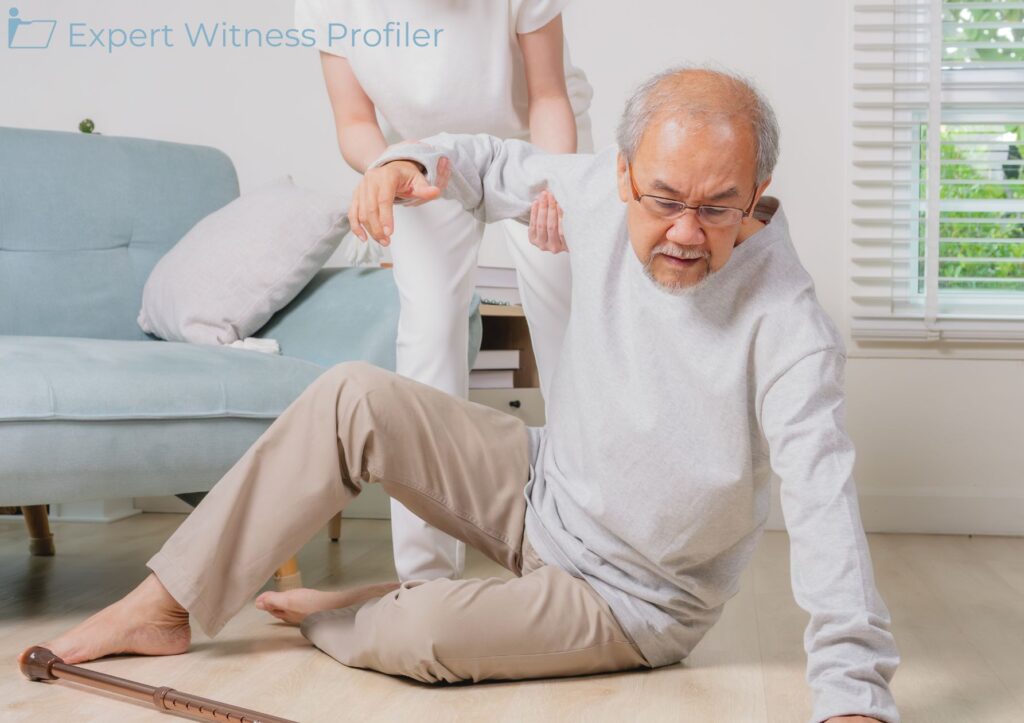Pathology Expert’s Emergency Care Opinions Excluded
Posted on November 4, 2025 by Expert Witness Profiler
Plaintiffs Lawrence Lieberman, Linda Lieberman, and the Estate of Myron Lieberman asserted claims for negligence and wrongful death against Defendant Target Corporation.
This matter involves a slip-and-fall incident that occurred at a Target store on December 9, 2021. The man who fell, Myron Lieberman, fractured his hip in the fall. He was taken to the hospital, where he underwent surgery the next morning and was discharged without complications two days after that. On December 24, 2021, fifteen days after the fall, Lieberman passed away.
Defendant filed a motion to exclude the testimony of Plaintiffs’ medical causation expert, Dr. Marvin Pietruszka.

Pathology Expert Witness
Marvin Pietruszka, M.D., M.Sc., F.C.A.P. is a forensic pathologist and forensic toxicologist who is board certified in anatomic and clinical pathology, occupational medicine, and forensic toxicology.
He earned his M.D. at the Autonomous University of Guadalajara in 1972, completed his Pathology Residency at the University of Pittsburgh, School of Medicine in 1976, and also received a Masters Degree in Forensic Toxicology in 2004 from the University of Florida.
Pietruszka has been doing IME’s for the past 11 years and has testified in several cases. He has been doing Med/Legal work since 1997. He is licensed to practice medicine in California, Texas and Pennsylvania. Pietruszka is a Clinical Associate Professor of Pathology, University of Southern California, serves as a Director at both the Psychemedics, a toxicology laboratory and at H.I.B.M. a genetic research laboratory and is a pathologist at Forensic Autopsy Services.
Discussion by the Court
Plaintiffs offered Pietruszka to opine on: (1) the effects of Defendant’s employees’ actions on the date in question; (2) how the employees should have acted in response to Leiberman’s injury; (3) how Lieberman’s risk of injury would have been reduced had his hip been immobilized and had he been immediately transported the hospital; and (4) Lieberman’s chance of survival had Defendant’s employees acted properly.
However, the Defendant argued that Pietruszka was not qualified to give these opinions under Rule 702(a) and that the opinions lacked a reliable factual basis and methodology under Rule 702(b) and (c).
A. Qualifications Under 702(a)
To begin with, Pietruszka lacks specialized experience or training in emergency medicine, trauma medicine, or acute care.
Plaintiffs’ counsel stated at oral argument that Pietruszka has decades of experience examining mortality rates in elderly individuals after hip fractures. But this expertise is not reflected in his research, publications, or courses taught. Instead, his CV describes research in various other areas such as immunizations, cancer, diabetes, and genetic mutations.
Therefore, the Court held that Plaintiffs have not shown by a preponderance of the evidence that Pietruszka is qualified as an expert by his “knowledge, skills, experience, training, or education” to opine on the treatment of Lieberman after his fall or the consequences of that treatment.
B. Factual Basis and Methodology Under Rule 702(b) and (c)
Pietruszka’s report lists nine conditions that are the most frequent causes of death in hip fracture cases: pneumonia, urinary tract infection, deep wound infection, myocardial infarction, stroke, sepsis, septic shock, pulmonary embolism, and deep vein thrombosis.
After listing these common causes of death, Pietruszka opined that the most probable cause of Lieberman’s death was deep vein thrombosis that resulted in a pulmonary embolism. While these are two of the nine conditions Pietruszka identified as frequent causes of death after hip fractures, he did nothing to rule out the other seven common causes.
Pietruszka did briefly explain why he settled on deep vein thrombosis and pulmonary embolism as the causes of Lieberman’s death. He states that Lieberman’s “continued lower extremity pain several weeks after undergoing surgical treatment for the hip fracture suggests there was significant tissue injury at the site of the fracture.”
He attributed this tissue injury to Defendant’s moving of Lieberman from the fall site, an act he asserts “would have caused more extensive tissue damage that would result in clot formation.” But Pietruszka did not explain how the pain experienced by Lieberman in the two weeks after his fracture and surgery, or the tissue damage he assumed, were any different from the pain and tissue damage that would have been caused by the fracture itself and the surgery performed the following day, during which a metal rod was inserted into Lieberman’s femur.
Stated differently, the Court held that Pietruszka provided no facts or reliable methodology the jury can use to conclude that Lieberman’s death was caused by the actions of Defendant’s employees rather than by the fall, hip fracture, and surgery of an 80-year-old man.
C. Rule 702 Conclusion
Plaintiffs have not shown by a preponderance of the evidence that Pietruszka is qualified to give the trauma and emergency care opinions he offers in this case, as required by Rule 702(a). Nor have they shown by a preponderance of the evidence that his opinions are based on sufficient facts and data or reliable principles and methods, as required by Rule 702(b) and (c). The Court accordingly granted Defendant’s motion and excluded Pietruszka’s testimony from the evidence in this case.
Held
The Court granted the Defendant’s motion to disqualify Dr. Marvin Pietruszka.
Key Takeaway:
In differential diagnosis, the expert “assumes the pertinence of all potential causes, then rules out the ones as to which there is no plausible evidence of causation, and then determines the most likely cause among those that cannot be excluded.”
When eliminating a potential cause, the “expert must provide reasons for rejecting alternative hypotheses using scientific methods and procedures and the elimination of those hypotheses must be founded on more than subjective beliefs or unsupported speculation.”
Pietruszka provided no explanation of how, in Lieberman’s case, he eliminated the other seven common causes of mortality following hip fractures.
Case Details:
| Case Caption: | Lieberman V. Target Corporation |
| Docket Number: | 2:24cv450 |
| Court Name: | United States District Court, Arizona |
| Order Date: | November 03, 2025 |





